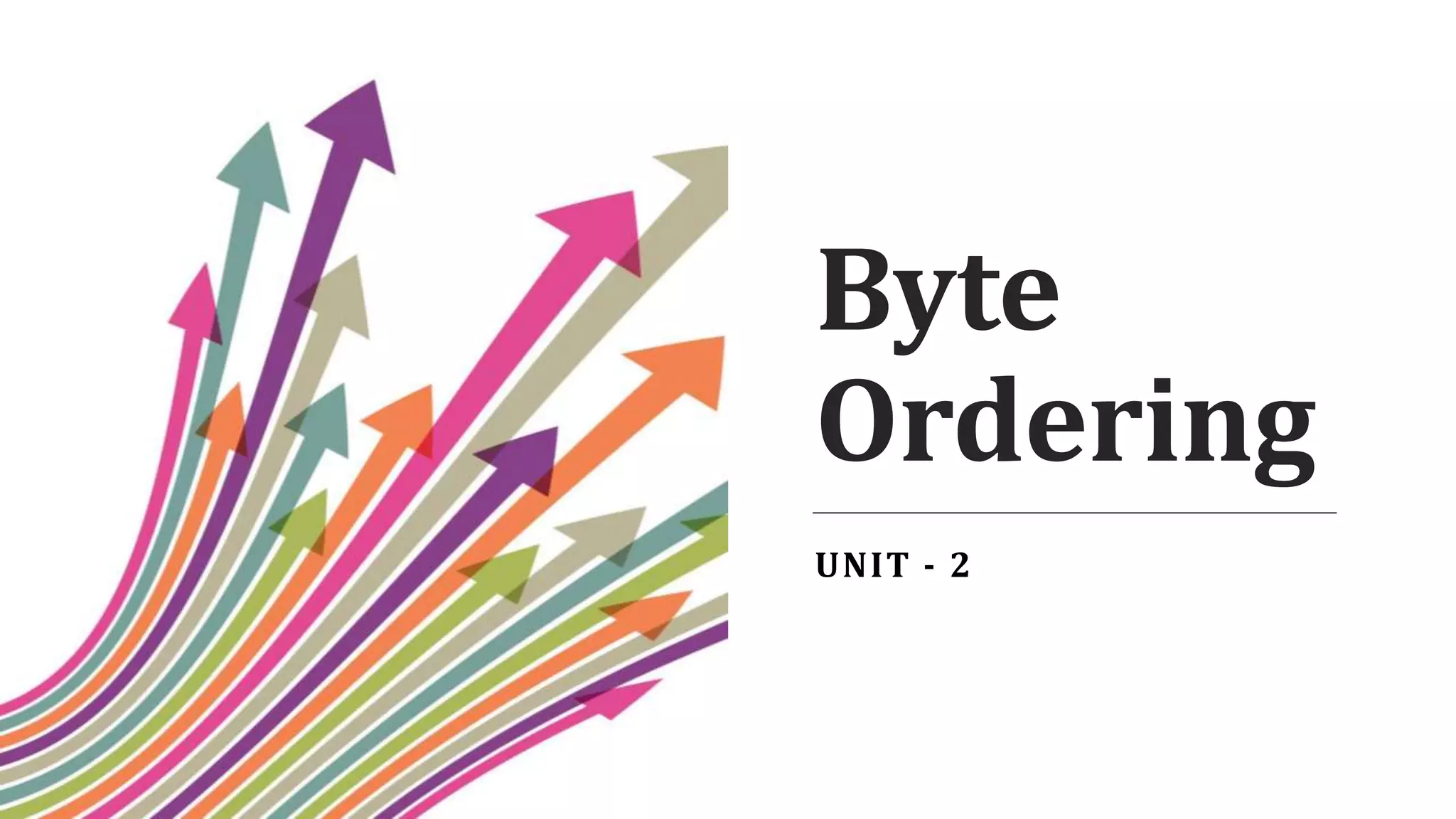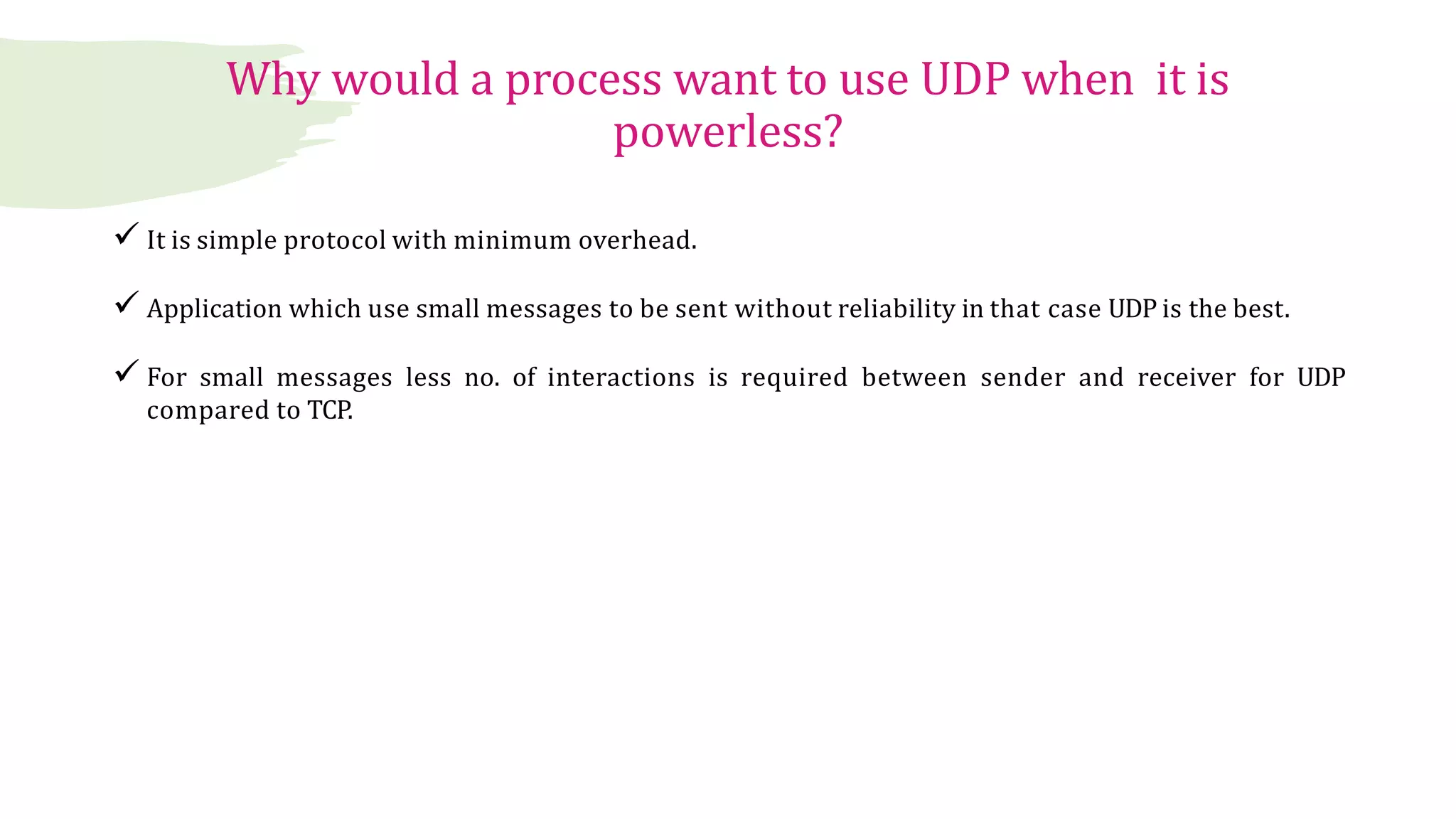Byte ordering refers to the arrangement of bytes when data is transmitted over a network. There are two common forms of byte ordering - big endian and little endian. Special functions like htons() and htonl() are used to convert between host byte ordering and network byte ordering when communicating between machines.
TCP and UDP are transport layer protocols that provide communication between applications on different hosts. TCP is a connection-oriented protocol that provides reliable, ordered delivery of streams of bytes. UDP is a connectionless protocol that provides best-effort delivery of datagrams but has less overhead than TCP. Both protocols use port numbers and socket APIs for processes to communicate.












































































